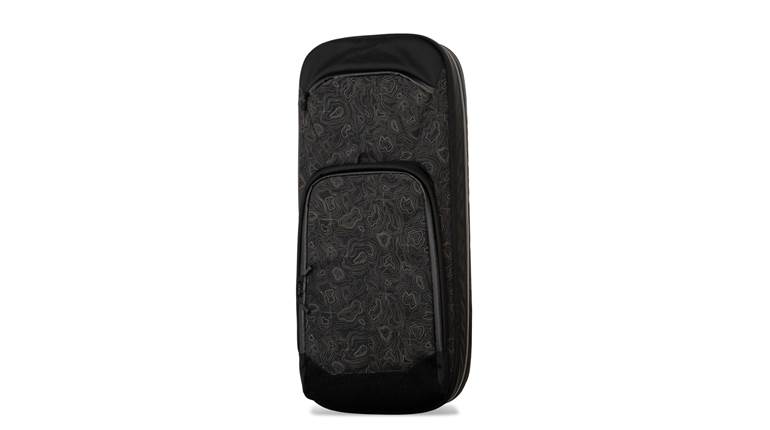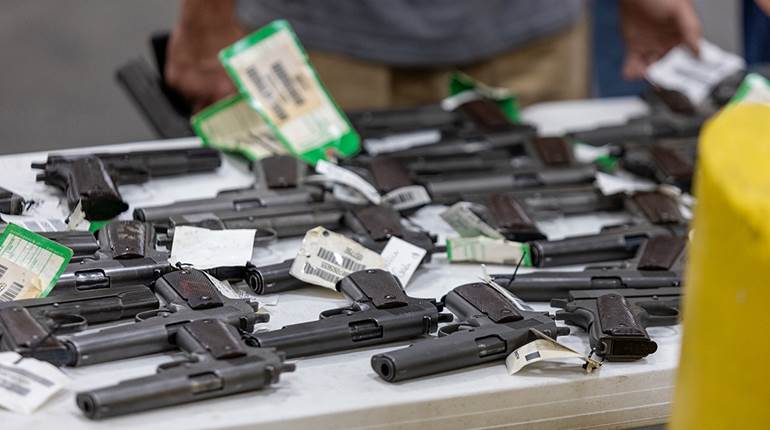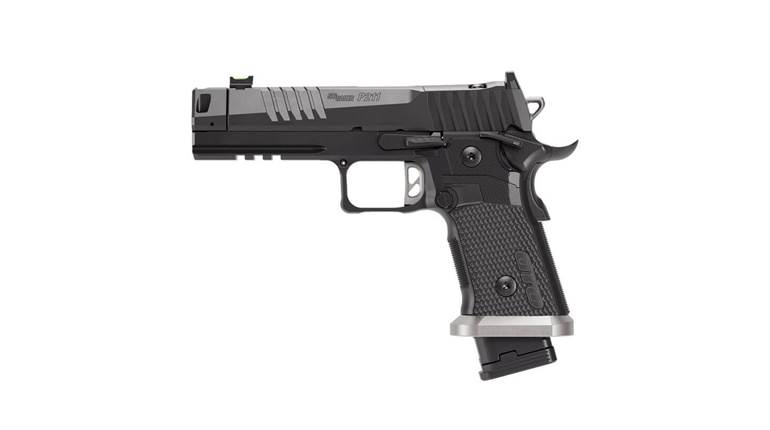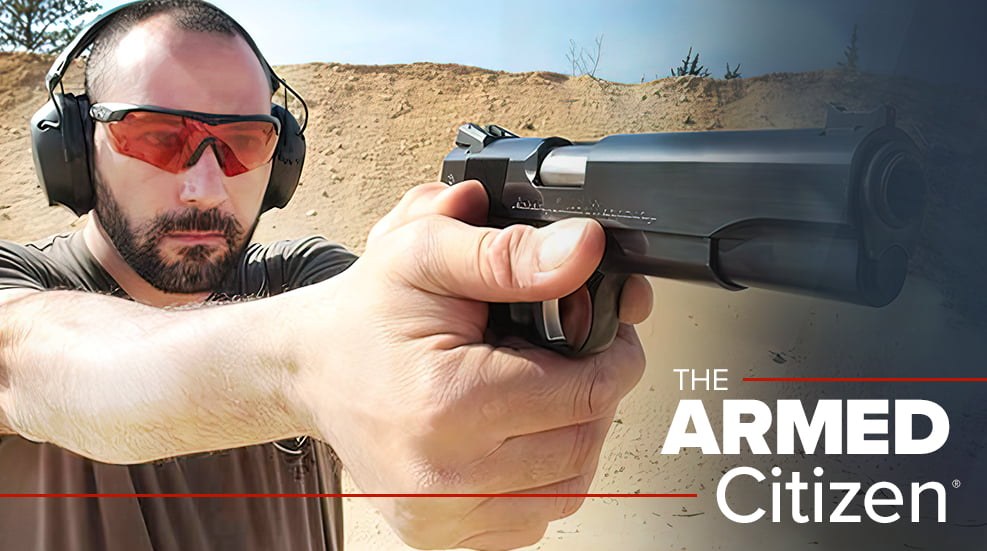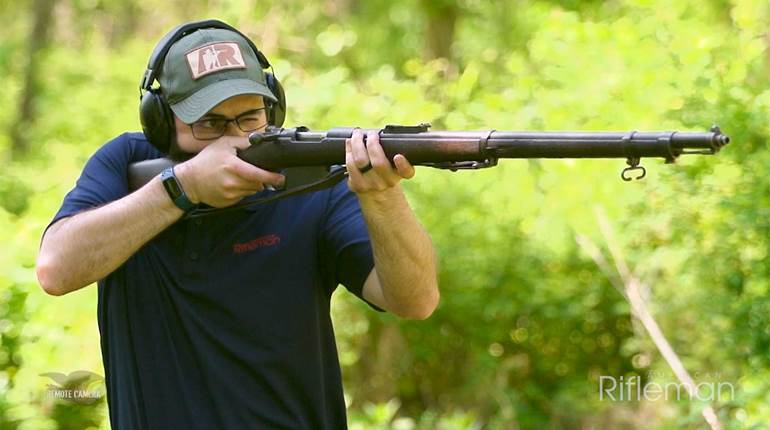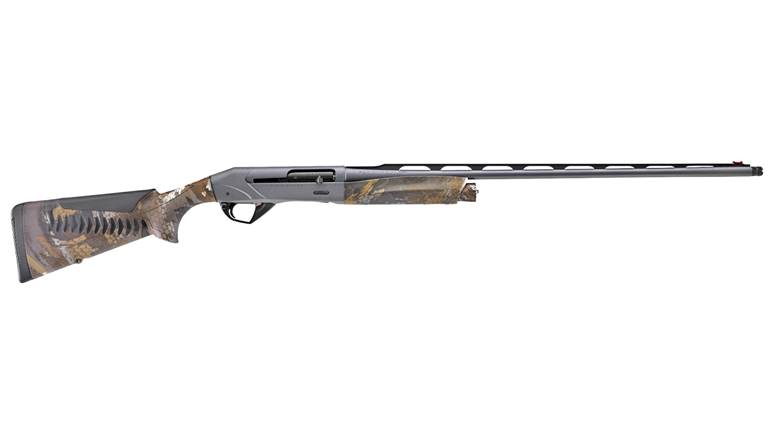
What do James Bond, John Wick, Jason Bourne and Jack Ryan all have in common? Besides the obvious, it’s the Walther P99. Used in more than 70 movies and more than 30 television shows, it has been a staple for screens big and small, for both heroes and villains, for many years.
One reason it’s seen so much pop culture usage is longevity. When you compare this year’s Gun Digest to that of 1997, you’ll find there are only two guns of the 9 mm Luger polymer variety still listed today. One is the subject of this story, the Walther P99, and the other is the Glock. Except for subtle parts updates and cosmetic and aesthetic touches, both appear little changed. While I suspect Glocks will be around for as long as there are guns, this year is it for newly produced P99s, in its P99 AS Final Edition form. And that’s a shame.
Firsts For An Iconic Maker
The P99 was only the third entirely new gun design introduced by Walther since World War II (anyone else remember the P5 and P88?). For the Ulm, Germany, gunmaker, it was the first polymer-frame pistol (Heckler & Koch was really first with the VP70). Designed by Horst Wesp and initially called the HSP for “hammerless pistol,” the P99 was striker-fired; previous Walthers, even if they appeared to be hammerless, had internal hammers. It had interchangeable backstraps, and a trained armorer could change the trigger’s method of operation in minutes—additional firsts for Walther. It had excellent ergonomics, a double-action/single-action trigger design and a decocker—a Walther hallmark since the Polizei Pistolen of 1929. It was a great gun then and now, and seemed to have all the features that contemporary law enforcement and the shooting community would be looking for in their next handguns.
We reviewed “Walther’s New P99” in the January 1997 issue. It was worthy of a cover then, and, I would argue, it’s probably worthy of one even now. There were so few polymer 9 mm pistols at the time (about six) that then-Associate Technical Editor Stanton L. Wormley, Jr., felt compelled to explain the features and benefits of polymer (“Polymer 12 reinforced by fiberglass” in the P99’s case) as a suitable gunmaking material. And the Walther was accurate, too, turning in an average five-shot group of 3.01" at 25 yards.
When it came to worldwide police and military trials, the P99 was a rock star. From Finland to Malaysia, it won contract after contract; Radom in Poland even made them under license. The gun was adopted by some U.S. police departments and garnered many fans—but the P99 should have been a household name. The founder of Interarms, Sam Cummings, died in his Monaco home in 1998, which jeopardized and then ended the incredibly successful partnership between Interarms and Walther dating back to 1962. So this was an awkward time to introduce a new gun. Walther was its premier line, but the importer lasted not much longer than its founder. Walther tried to go it alone briefly, then turned to one of the first names in American firearms, Smith & Wesson.
It seemed like a win-win at the time. Walther PPK pistols would be made at Smith’s plant in Maine, and S&W would be Walther’s U.S. importer. There was even a joint venture between Smith & Wesson and Walther in 1999 called the SW99. It had a German-made frame, and the barrel and slide were made by Smith, but S&W introduced its own polymer Military & Police in 2005, and P99s (save the Compacts) dropped from the catalog. Eventually, Walther decided to go its own way, founding Walther Arms in Fort Smith, Ark., in 2012.

The Gun Of The Future
I was here as managing editor when the P99 was introduced. Back then, I believed that the P99 and H&K USP were the eighth and ninth Wonders of the World. Recently, I was able to examine one of the first P99s imported into the United States by Interarms side by side with the Final Edition. Both the old and new guns bear the distinctive, racy even, trapezoidal shape to the slide’s profile. Even the glare-reducing grooves at the slide’s top look like they were cut by the same machine. Germans. Aside from wider cocking serrations extending up the slide on the new gun and some small dimensional parts differences, they are much the same. The markings on the Final Edition are more modern, the trigger guard has been re-contoured and the closed rail system on the dustcover of the Interarms gun made way for a single-lug Picatinny rail. Even after nearly three decades, frames, barrels, slides and magazines interchange.
The Final Edition P99, like its predecessors, is a locked-breech, short-recoil-operated pistol that uses the tried-and-true SIG-style locking system. Barrels are 4"-long with six-groove, 1:10" rifling. You can have the Final Edition in any chambering you want, so long as it’s 9 mm Luger—the .40 S&W P99 died with the rest of them.
Ergonomics on the gun are excellent and—dare I say it—were ahead of their time. The grip frame was designed by Cesare Morini, of Olympic free-pistol fame. The frontstrap has an undercut under the trigger guard, allowing the middle finger to ride high. Finger grooves on the frame’s front were given more purchase through longitudinal and vertical lines. The frame’s sides used wide raised pebbling, with two differently sized dots, as did the backstrap, for grip. There are recesses for the strong hand’s fingertips on either side. The backstrap can be easily replaced by driving out a 1/8" roll pin on the bottom rear of the frame. There’s also a slot cut into its rear for a lanyard to be wrapped around the pin. The three included backstraps are marked “S,” “M” or “L”; the large adds about 0.20" to the trigger reach. For concealment, I might go more toward the small, but for general use, the medium suited me just fine. Width across the non-bilateral metal slide lock is 1.3".
No manual external safety is included, nor is there a safety blade in the trigger face, but there are three other safety features: a cocking indicator, a loaded-chamber indicator and a passive firing-pin safety. When the striker is cocked, you can see its tail with a red dot protruding from the rear of the slide; you can also feel it by hand. The long hook extractor also pulls double-duty as a loaded-chamber indicator. With the extractor’s front pushed out slightly when grabbing a cartridge’s rim, its rear moves inside its recess, revealing a small rectangle of red paint. You can see it or feel the position of the extractor. Ejection is via a fixed blade mounted inside the frame’s left.
With the P99, the decocker is slide-mounted, but unlike earlier Walthers and Berettas, it’s a longitudinal, flush plunger in the slide’s top left that is depressed, not an exterior lever to be flipped. Frankly, decocking is instinctive, quick and there is no messing with either confusing or awkward-to-reach frame- or slide-mounted levers. Just use the offside thumb to press down. You can even do it in the dark.
There are four steel inserts molded into the polymer frame to guide slide travel—two each at the front and rear. There is a trigger bar running along the inside right of the frame. The P99, then and now, has two sears—or at least two parts that act as sears. The first is for double-action and is just the tail or claw of the bar that acts on the striker. But there’s also a single-action sear and actuating lever activated by the trigger bar that catches if the decocker is not depressed. A passive firing pin safety tab presses up on the plunger in the slide’s underside as the trigger bar is moved to the rear. If the trigger is not pulled, the striker cannot move forward to hit a primer. Also being cleared, but after cycling, is another tab that serves as a disconnector.

A Versatile Trigger
The trigger system as introduced was ingenious, but not perfect. Initially, there was an additional safety feature on the very early P99s; you basically had to engage the trigger perfectly straight rearward or tabs on its back would prevent the trigger from moving into the frame and acting on the trigger bar. Any appreciable sideways pressure, though, and the trigger could not move its bar. For some shooters, it resulted in not being able to fire the gun at all. Interarms and Walther soon corrected this, then there were other changes, eventually resulting in the current AS or “Anti-Stress” trigger. Recall that most police officers in the United States had not transitioned completely away from their double-action/single-action revolvers as the P99 made its debut. Some agencies wanted a long, double-action pull, and weight, every time. The components allowed for that (but the guns under discussion here have the AS trigger). What others wanted was a longer, heavier trigger pull just on the first shot, which was familiar and also desired by some of Walther’s other clients worldwide—including German police agencies. This would be followed by a shorter, lighter pull on subsequent shots. The “stress” it was designed to alleviate was that on the shooter—making the first discharge a more deliberate act—not anything mechanical with the pistol.
To operate as a traditional double-action/single-action was simple. After cycling the slide, loading the chamber and decocking, pulling the trigger fully back would move the trigger bar rearward to cock and release the striker to fire with one long, heavy pull—14 lbs., 1 oz., on our latest sample.

Once the slide is manipulated, though, the striker is cocked—unless decocked. Pulling the trigger 1/2" results in no resistance, only rearward trigger movement; the Daewoo DP51 and Browning BDM had the option of a similar trigger stroke. Never heard of them? Probably for a reason. Think of it as kind of a two-stage rifle trigger, with the first stage being only length. With the P99, the trigger nearly seems to leap back to the single-action position. Like a set trigger if pushed reward but not all the way, it will remain in its second, rearward position. Distance from the trigger to the medium backstrap is 2.95" with the trigger fully forward (as in double-action) but reduced by 0.34" when in the single-action position if even light pressure is applied to its wide, comfortable trigger shoe. Here the striker is already under tension—the slide did that for you—so less than half an inch of trigger movement allows the trigger bar to clear the tail of the striker and permits it to go forward while clearing the passive-firing safeties. Also, if you started out loaded and decocked, slight slide manipulation, about 1/4", would cock the striker again.

The funny thing is that if you wanted a light, crisp trigger pull, the P99 had it all along; you just had to read the manual. One of things you notice about the trigger when in single-action mode is its crispness. It’s just under a 5-lb. break, has little-to-no overtravel, then a very short reset of less than 0.20". The P99 had it long before anyone talked about it. Frankly, the AS Final Edition trigger is quite good, and it’s smoother than the original.
Great triggers and great accuracy have been hallmarks of the P99 since day one, and the Final Edition did not disappoint. The pistol was fired for accuracy at 15 yards, and the results can be seen in the accompanying table. Four different shooters ran the gun through range and holster drills. Controlled pairs came easily, and there were no malfunctions of any sort in more than 500 rounds of firing.
Other P99 Features
Thanks to the decocker, you don’t have to pull the trigger for disassembly. Remove the magazine, then retract the slide to ensure the chamber is empty, let it go forward, then press down on the decocker. This takes all the tension off the striker. Pull the frame-mounted slide release down, and the slide and barrel assembly can be removed from the frame.
The blue-steel, 15-round box magazine has witness holes on its rear and is retained by bilateral paddle releases on either side on the trigger guard. Pressing it downward pulls the steel catch forward, allowing the magazine to drop. I’ve never been able to work a trigger guard-mounted release such as this with my right thumb without breaking my grip and instead trained to use my trigger finger.

Just like the original, polymer three-dot sights on the Final Edition are a screw-adjustable rear and a post front. The latter can be swapped for posts of different heights via a slot in the slide’s underside.
The Last Of Its Kind
This will be the terminal year of manufacture for the gun first wielded by Pierce Brosnan as 007 in “Tomorrow Never Dies” (1997). Interestingly, the actor became dear friends with Wulf-Heinz Pflaumer, one of Walther’s owners. Walther GmbH in Germany will make enough Final Edition AS guns to meet demand. Cosmetically, the Final Edition is a striking pistol. The military green frame—recalling some of this gun’s service from Asia to the Arctic—is offset by the black polymer backstrap, trigger, slide release and magazine release, giving the lower part of the gun a two-tone finish. Then, of course, you have the nitrated and then blued slide. I’ve been to the Walther facility in Germany and seen the metal parts come right off the CNC machines. They are nitride-treated for hardness and corrosion-resistance and blued, just because they’re Walther—not many firms take that extra step. They can’t help themselves. The slide’s right is covered in proofmarks, while the left bears the Walther banner, “P99 AS” and the words “Final Edition.”

As the lyrics to Europe’s “The Final Countdown” echo through my head, it’s time to answer the question: why will there be no more new P99s? First, I would argue, it didn’t receive the support it needed from its importer at a critical time in the United States. Next, this is a gun that was very advanced in 1997 and still seems strikingly modern, but in a world of all-the-same trigger pulls and bulky slides, it got left behind. It has been supplanted by other guns with features more desired by today’s armed citizens and law-enforcement alike. Also, the decocker doesn’t lend itself to mounting a micro red-dot on the slide—there’s just not enough real estate. Then throw in the two latest 9 mm service pistols from Walther, the PPQ and the PDP, which could be in the running for the top service-grade pistols in the world.
Finally, there is the price. When introduced, it was nearly $750—which holds up well considering inflation—but the Final Edition will MSRP at $850. Making guns the old-school way costs old-school money. With a PDP coming in at around $650 at retail, you can see how the economics work. The Final Edition does come with two magazines, a commemorative box and a coin, though.
If you’ve ever wanted one, and you should have, it’s time to get your dealer’s order into Walther Arms. I’d be the last guy to tell John Wick he made a mistake—but with the P99, he did not.













